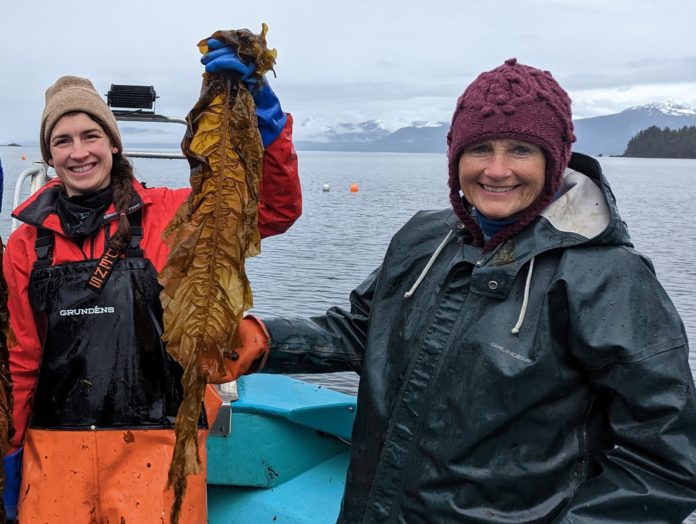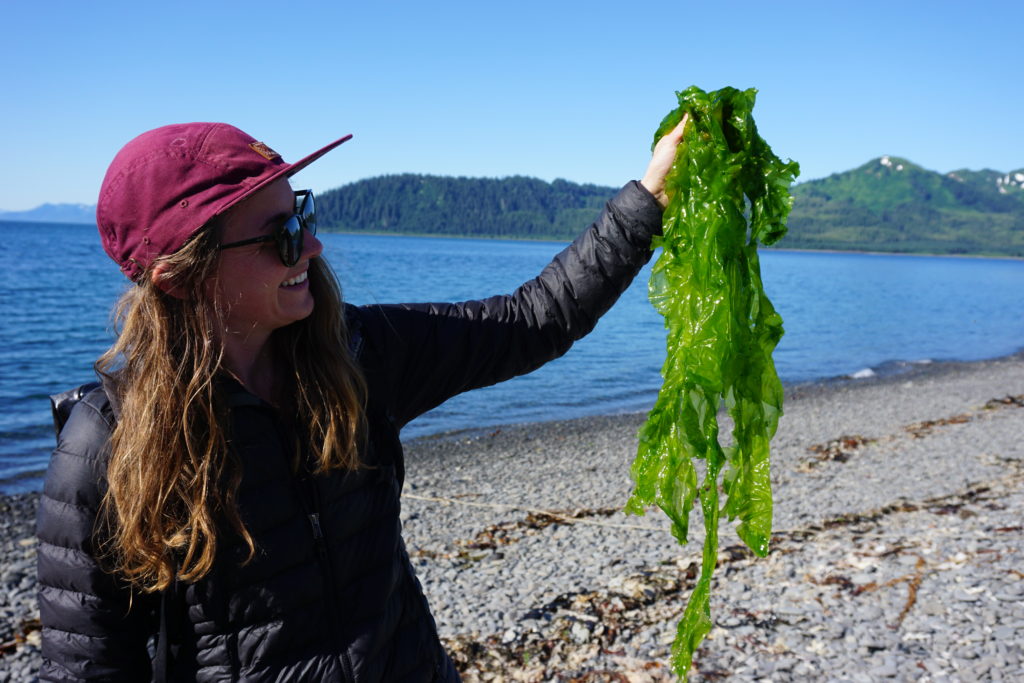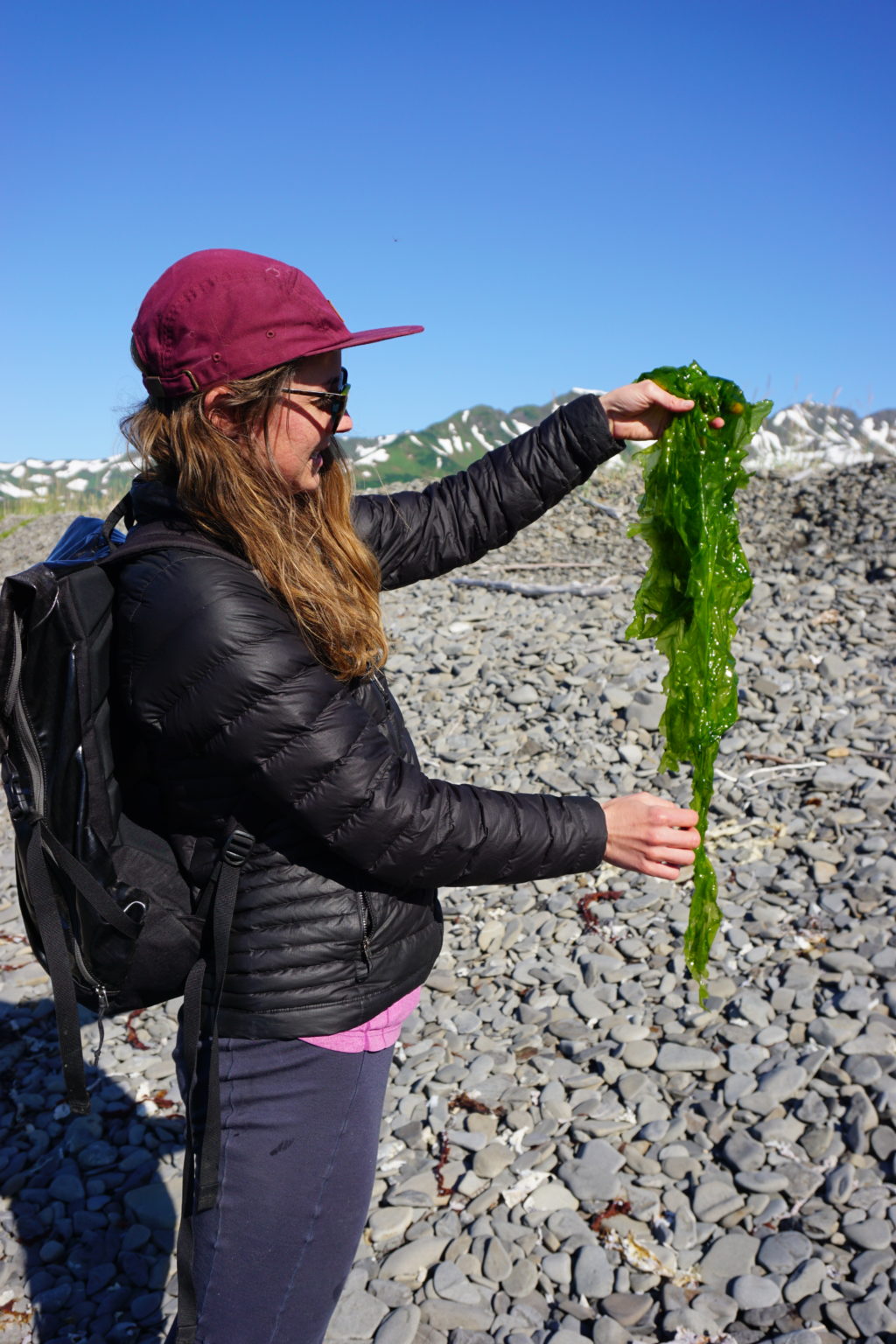
Kelp farmers in Prince William Sound saw a plentiful harvest this spring season despite cold water conditions. The few commercial kelp growing operations in the area reported that their harvests were at least double that of the 2022 season.
The harvest season for kelp in Prince William Sound (PWS) lasts for roughly two months between April and May.
Farmers and researchers alike are excited about the possibility of kelp and mariculture as a means to diversify fisheries in the region. Cale Hershcleb, co-owner of Royal Ocean Kelp Company, says observing how kelp grows in the waters of PWS is an integral part of exploring this new marine food product.
“This is a new industry and we still have a lot to learn and put in place. We are learning new things every week,” Hershcleb said.
Looking back on this past season it is possible that the cold conditions favored growth rather than stunting it, he explained.
“The kelp seems to like cold conditions, the colder the spring the longer we can let the kelp grow,” Herschleb said. He added that colder spring seasons may have other positive effects on the kelp crop in addition to longer growth periods.
“As things warm up, other species in the water wake up and begin to propagate on the kelp, this natural process is referred to as biofouling,” Herschleb said. The majority of food quality kelp must be harvested before this biofouling process occurs.
Royal Ocean Kelp Company was not the only commercial operation to see a bountiful harvest this year. Skye Steritz, president and cofounder at Noble Ocean Farms, agreed that a reduction in biofouling on the fresh kelp is good for business.

“Like any agricultural crop there is a gradient of quality,” she said. Steriz says that the early crop is freshest and hosts less small marine organisms which, though they may be cleaned off the kelp, present too laborious a task for processing. As such the later kelp crop is not suitable for fresh food products and much of this kelp ends up as fertilizer and compost material.
Noble Ocean Farms harvested over 3,700 pounds of sugar kelp and ribbon kelp combined, a large increase compared to their crop of 860 combined pounds in 2022.
The success of this year’s kelp harvest does not come without difficulties however. Both aforementioned operators are focusing much of their efforts on processing and marketing. Finding a large wholesale market for the fresh, unprocessed kelp is challenging.
A lack of processing capacity for the fresh kelp in Cordova may be a major limiting factor for the future of the crop. Currently the vast majority of market demand for kelp is in dry product form.
Royal Ocean made inroads into drying small amounts of their kelp this past season for the local market.
“We are in love with the flavor and versatility of dried kelp, and have been making forays into drying larger amounts of kelp. We are designing packaging and will be getting our dried kelp out into the community soon,” Herschleb said of their efforts.

As of yet, Cordovan processing facilities are lacking in any large-scale dehydration capabilities. In response to this, commercial farmers in PWS are getting creative with markets and product forms for fresh or frozen kelp instead.
“We’re hoping to do more product development,” Steritz said of their sugar kelp and ribbon kelp products. “We’ve been having fun trying out different recipes.”
The commercial operators are open to working with one another as well as various mariculture research sites in the region to explore more possibilities. Herschleb said that, in an industry as new as this, any and all shared information such as temperature effects on growing conditions is beneficial.
“I am happy to share knowledge and experience,” he said. “The more small farms that start growing in the PWS, the easier it will be to collaborate on processing and marketing.”





